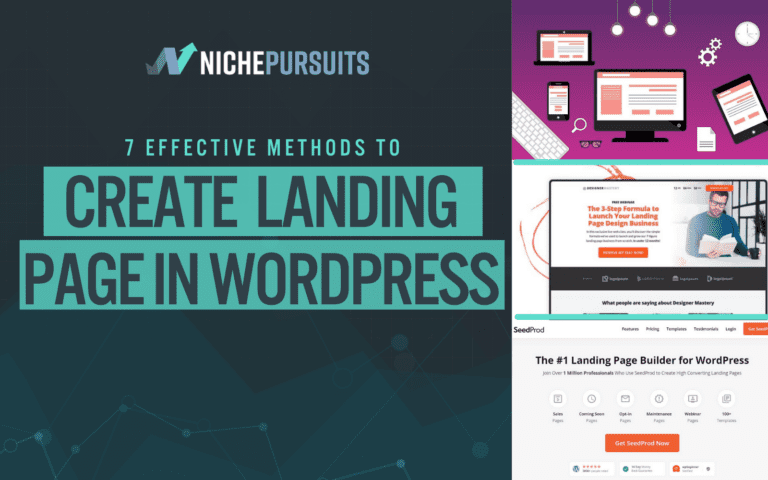
So you’ve set up your WordPress website and you’re ready to attract visitors and convert them into customers. But how do you ensure that your landing pages are not only functional but visually stunning as well? In this article, we’ll share 10 invaluable tips to help you create captivating landing pages using WordPress. From choosing the right theme to optimizing your page for mobile devices, these tips will empower you to create stunning landing pages that not only grab attention but also drive conversions.
Choose the right theme
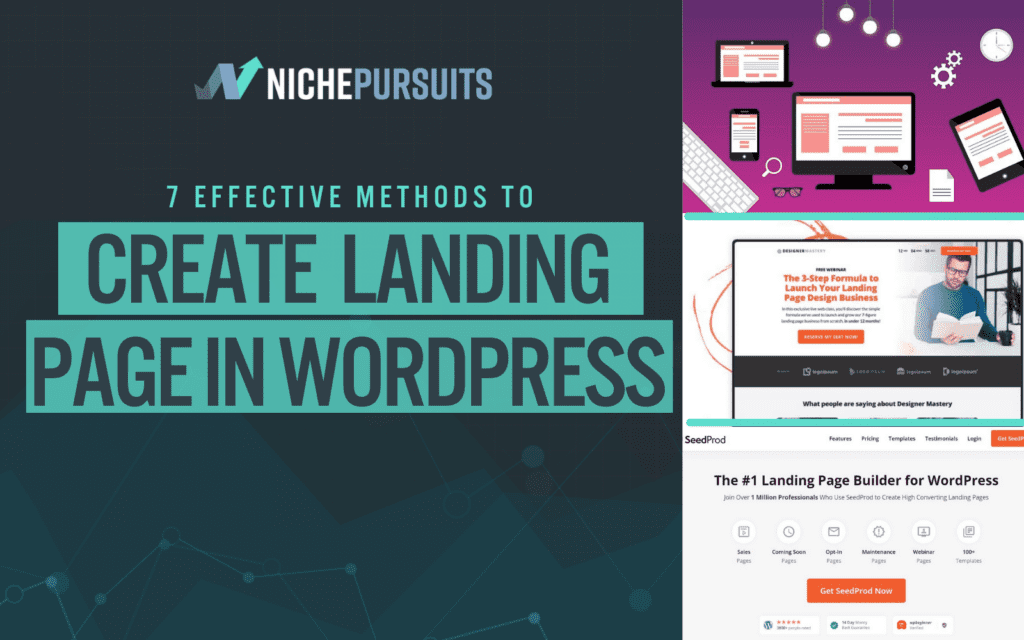
Affiliate Marketing Academy – Get it here
Consider your goals and target audience
When choosing a theme for your WordPress landing page, it’s important to consider your goals and target audience. Think about what you want to achieve with your landing page and who you are trying to reach. Are you looking to generate leads, sell a product, or promote an event? Understanding your goals will help you choose a theme that aligns with your objectives.
Additionally, consider who your target audience is. Are they tech-savvy or more traditional? Do they prefer a minimalist design or something more visually rich? By keeping your target audience in mind, you can select a theme that resonates with them and enhances the overall user experience.
Look for a theme with a clean and modern design
A clean and modern design is essential for creating a stunning landing page. It gives a professional and polished look to your website and makes a great first impression on your visitors. Look for themes that have a minimalist and sleek design, with plenty of white space and a good balance between text and images.
A clean design not only looks visually appealing, but it also helps users focus on the most important elements of your landing page, such as your call-to-action or key messaging. Avoid themes that are cluttered or have too many flashy elements, as they can distract and overwhelm your visitors.
Check for responsive design
With the majority of internet users accessing websites on their mobile devices, it’s crucial that your landing page looks great and functions well on all screen sizes. This is where responsive design comes in. A responsive theme automatically adjusts the layout and content of your landing page to fit different screen sizes, ensuring a seamless user experience across devices.
Testing your landing page on various devices before selecting a theme is important to ensure that the responsive design is working properly. Make sure that all elements, including images and text, are displayed correctly and that the navigation is easy to use on mobile devices. A responsive theme will not only improve user experience but also boost your SEO efforts, as Google prioritizes mobile-friendly websites in search results.
Ensure the theme is customizable
Customization is key when it comes to creating a unique and personalized landing page. Look for a theme that offers a high level of customization options, allowing you to make changes to colors, fonts, layouts, and other elements to match your brand identity.
Customizability gives you the freedom to create a landing page that truly reflects your business and captures your brand personality. It allows you to differentiate yourself from competitors and create a memorable experience for your visitors. Make sure to explore the customization options of different themes before making your final decision.
Optimize page loading speed
Use a lightweight theme
Page loading speed is a crucial factor in determining the success of your landing page. Visitors expect fast-loading websites and will quickly leave if they have to wait too long for your page to load. One way to improve page loading speed is by choosing a lightweight theme.
A lightweight theme has optimized code and minimal design elements, resulting in faster loading times. These themes are designed to prioritize performance without compromising the visual appeal of your landing page. Look for themes that advertise their speed and performance capabilities, and consider running speed tests on different themes before making your decision.
Affiliate Marketing Academy – Check it out
Minimize the use of plugins
While plugins can add functionality and enhance your landing page, they can also slow down your website if used excessively. Each plugin you add to your WordPress site adds extra code and increases the load on your server, potentially affecting the loading speed of your landing page.
Before installing a plugin, carefully evaluate if it is necessary and if there are any alternative methods to achieve the same functionality. Choose plugins that are lightweight, well-optimized, and regularly updated to ensure compatibility with your theme. By minimizing the use of plugins, you can improve the overall performance of your landing page.
Optimize images
Images play a crucial role in creating an engaging and visually appealing landing page. However, large and unoptimized images can significantly slow down your website. To optimize your images, you can compress them without compromising quality.
There are various online tools and plugins available that can help you compress and optimize your images. Also, consider using the correct file format for different types of images, such as JPEG for photographs and PNG for graphics with transparency. Additionally, make sure to resize your images to the proper dimensions before uploading them to your landing page.
Utilize caching plugins
Caching is a technique that allows for the temporary storage of website data, such as HTML files and images, to improve page loading speed. Caching plugins create and serve static HTML files to visitors, reducing the need to retrieve data from the database every time a page is accessed.
By utilizing caching plugins, you can dramatically improve the loading speed of your landing page. These plugins generate and store cached versions of your landing page, making it quicker to load for subsequent visitors. Look for caching plugins that are compatible with your chosen theme, regularly updated, and provide easy configuration options.
Plan your layout
Determine the key elements to include
A well-planned layout is essential for guiding visitors through your landing page and highlighting the most important information. Before designing your landing page, determine the key elements you want to include.
Consider the purpose of your landing page and the actions you want visitors to take. Do you want them to subscribe to your newsletter, purchase a product, or request a demo? Based on your goals, determine the essential elements that will motivate visitors to take action.
Common elements of a landing page include a compelling headline, a clear call-to-action, supporting text, visuals, testimonials, and contact information. These elements should be strategically placed to create a logical flow of information and guide visitors towards your desired conversion.
Consider the flow of information
When designing your landing page, it’s important to consider the flow of information. Visitors should be able to quickly understand what your page is about and what action you want them to take.
Start with a compelling headline that grabs attention and clearly communicates the value proposition of your offer. Follow it up with supporting text that provides more details and highlights the benefits of your product or service. Finally, place a strong call-to-action at a prominent location, guiding visitors to take the desired action.
Break up the content using headings and subheadings to make it scannable and easy to digest. Use bullet points or numbered lists to highlight the key features or benefits of your offer. By structuring your information in a clear and logical manner, you can improve the readability and usability of your landing page.
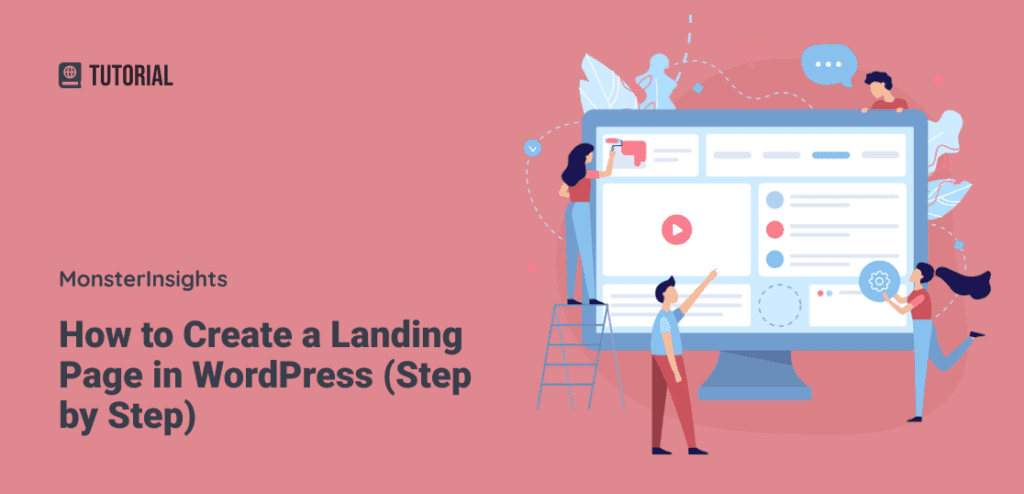
Use whitespace effectively
Whitespace, also known as negative space, refers to the empty space between elements on your landing page. It is a powerful design element that can enhance the visual appeal and readability of your page.
By using whitespace effectively, you can create a clean and organized layout that guides visitors’ attention to the most important elements. It also helps to reduce clutter and prevent the page from appearing overwhelming or confusing. Use ample whitespace around your headline, call-to-action, and key visuals to make them stand out.
Whitespace not only improves the aesthetics of your landing page but also improves readability. It allows visitors to focus on the content without distractions, making it easier for them to understand your message and take the desired action.
Ensure easy navigation
Navigation plays a crucial role in the user experience of your landing page. Visitors should be able to navigate your page effortlessly and find the information they are looking for.
Keep your navigation menu simple and intuitive, with clear labels that accurately describe the content of each page. Include a link to your landing page in the main navigation menu or create a prominent button that directs visitors to it. Make sure that your navigation is consistent throughout your website, allowing visitors to easily move between pages.
Consider implementing a sticky navigation menu, so it remains visible even as visitors scroll down your landing page. This ensures that visitors can access the menu at any point, without having to scroll back to the top. Additionally, place internal links strategically within your content to guide visitors to related sections or additional information.
Choose compelling visuals
Use high-quality images
Visuals are a powerful tool for capturing attention and communicating your message effectively. To create a stunning landing page, it’s important to use high-quality images that are relevant to your offer and visually appealing.
Invest in professional photography or use high-resolution stock photos to ensure the images on your landing page are clear, crisp, and visually engaging. Avoid blurry or pixelated images, as they can give a negative impression of your brand and undermine the credibility of your landing page.
Consider using custom images that showcase your product or service in action. By using real-life images, you can create a stronger connection with your target audience and help them visualize the benefits of your offer.
Incorporate eye-catching graphics
In addition to high-quality images, incorporating eye-catching graphics can help to enhance the visual appeal of your landing page. Graphics such as icons, illustrations, or infographics can be used to visually represent key concepts or information.
Choose graphics that are consistent with your brand identity and complement the overall design of your landing page. Use them strategically to break up text and create visual interest. Ensure that the graphics are relevant to your content and add value to the user experience.
By incorporating eye-catching graphics, you can make your landing page more visually appealing and engaging. Graphics can help to communicate complex ideas in a simple and digestible manner, making it easier for visitors to understand the benefits of your offer.
Make use of videos and animations
Videos and animations are highly effective in capturing attention and conveying your message in an engaging way. They can help to demonstrate the value of your product or service, showcase testimonials, or provide tutorials.
Consider incorporating a video on your landing page that showcases the features and benefits of your product or service. Keep the video concise and to the point, focusing on the key selling points. Make sure that the video is of high quality and optimized for fast loading.
Animations can also be used to add dynamic elements to your landing page. Consider using subtle animations to draw attention to important elements or to create visual interest. However, be cautious not to overuse animations, as they can become distracting and negatively impact the user experience.
By utilizing videos and animations effectively, you can create a more engaging and interactive landing page that captures the attention of your visitors and encourages them to take action.
Craft persuasive headlines
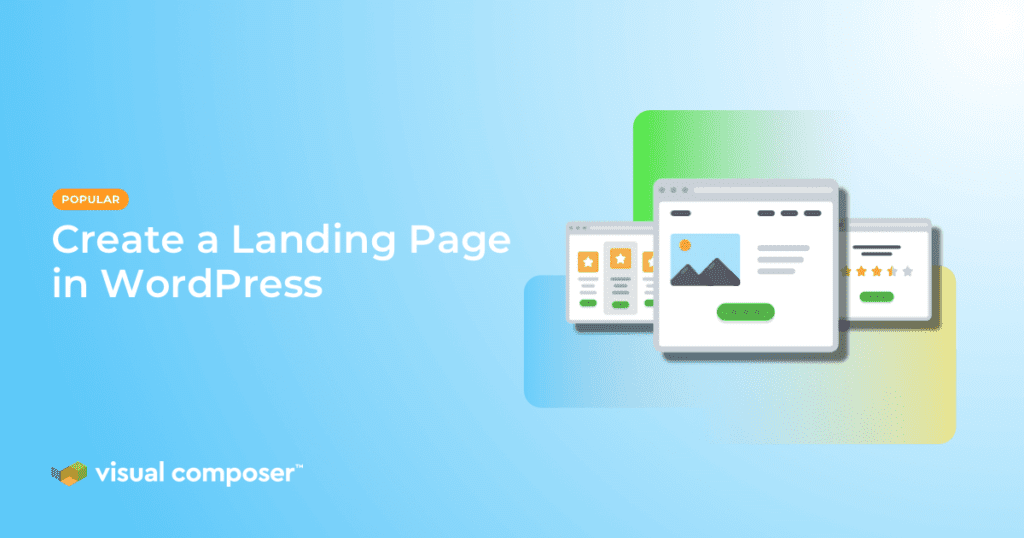
Keep it concise and clear
The headline of your landing page is one of the first things visitors will see, so it’s important to make it concise and clear. Your headline should immediately communicate the value proposition of your offer and capture the attention of your target audience.
Avoid using overly long or complicated headlines that may confuse or overwhelm visitors. Keep it simple and focused, using concise language that clearly conveys the benefits or solutions you are offering.
Make sure that your headline aligns with the content of your landing page and accurately represents the offer or information you are providing. Avoid misleading or clickbait-style headlines, as they can erode trust and lead to a high bounce rate.
Highlight the benefits
One of the key purposes of your headline is to highlight the benefits of your offer and convey its value to the reader. Instead of focusing solely on features or technical details, emphasize how your product or service will improve the lives of your customers.
Consider the pain points or challenges your target audience faces and position your headline as a solution or opportunity. By clearly articulating the benefits, you can capture the interest of your visitors and motivate them to learn more or take action.
When highlighting benefits, use language that is easy to understand and relatable to your target audience. Focus on the positive outcomes or transformations that your offer can provide, and paint a compelling picture of what their life could be like with your product or service.
Create a sense of urgency
By creating a sense of urgency in your headline, you can increase the motivation for visitors to take immediate action. Urgency implies that there is a limited opportunity or time frame to benefit from your offer, creating a fear of missing out (FOMO) if they don’t act fast.
Use words and phrases that convey urgency, such as “limited time offer,” “exclusive deal,” or “act now.” By emphasizing scarcity or time-limited availability, you can create a sense of urgency and prompt visitors to take immediate action instead of delaying or leaving the page.
However, be cautious not to create false urgency or manipulate visitors into making hasty decisions. Make sure that the urgency you create is genuine and aligns with your offer and business practices. Building trust and credibility is crucial for long-term success.
Use action-oriented language
To further enhance the persuasiveness of your headline, use action-oriented language that encourages visitors to take immediate action. Words and phrases such as “get started,” “unlock,” “discover,” or “join now” inspire visitors to engage with your offer rather than passively read your landing page.
Action-oriented language can create a feeling of excitement and anticipation, prompting visitors to imagine the positive outcomes of taking action. It positions your offer as something active and empowering, rather than something passive and mundane.
Consider the specific action you want visitors to take on your landing page, whether it’s signing up for a newsletter, making a purchase, or requesting more information. Incorporate relevant verbs or calls-to-action into your headline to reinforce the desired action and motivate visitors to take that step.
Write captivating copy
Focus on the customer’s needs
When writing the copy for your landing page, it’s important to focus on the needs and desires of your customers. Instead of talking solely about your product or service, highlight how it addresses their pain points or fulfills their desires.
Start by understanding your target audience and what they are looking for. What problems do they need solving? What goals are they trying to achieve? By positioning your offer as a solution or opportunity, you can make it more compelling and relevant to your customers.
Address their needs directly in your copy, using language that resonates with them. Show empathy and understanding of their challenges, and position your offer as the ideal solution. By focusing on the customer’s needs, you can create a stronger connection and motivate them to take action.
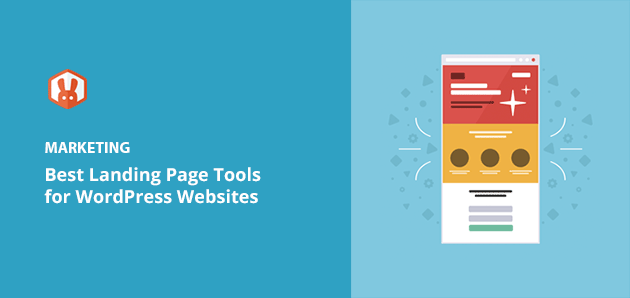
Highlight the features and benefits
While focusing on the customer’s needs is essential, it’s also important to highlight the features and benefits of your product or service. Features provide a detailed understanding of what your offer includes, while benefits explain the positive outcomes or experiences that customers can expect.
Clearly communicate the features of your offer, explaining what sets it apart from competitors and how it solves the customer’s problems. Use bullet points or numbered lists to make the features easy to scan and understand.
After highlighting the features, transition into discussing the benefits. Explain how the features translate into specific advantages or positive results for the customer. Will it save them time, improve their productivity, or enhance their quality of life? Paint a clear picture of the value they will gain by choosing your product or service.
Provide social proof
Social proof is a powerful persuasion tool that can help to build trust and credibility with your visitors. It demonstrates that other people have had positive experiences with your product or service, increasing the likelihood that new visitors will also have a positive outcome.
Incorporate testimonials, reviews, or case studies into your landing page to provide social proof. Include quotes from satisfied customers or showcase ratings and reviews from reputable sources. If possible, use real names and photos to add authenticity and make the testimonials more relatable.
Testimonials should be specific and highlight the benefits or results that customers have achieved. They should address common objections or concerns that potential customers may have and provide reassurance that your offer delivers on its promises.
Use persuasive language
To make your copy more compelling, use persuasive language that engages and captivates the reader. Focus on creating an emotional connection and tap into the desires and aspirations of your target audience.
Use sensory language to make your copy more vivid and relatable. Describe how your product or service looks, feels, or sounds. Use storytelling techniques to create narrative and evoke emotions.
Create a sense of urgency in your copy by emphasizing time limitations or emphasizing scarcity. Use powerful verbs and action-oriented language to create a sense of empowerment and inspire readers to take action.
However, be mindful of the balance between persuasion and honesty. Make sure that your claims and promises are accurate and can be supported by evidence. Building trust and credibility is crucial for maintaining a positive reputation and long-term success.
Include a strong call-to-action (CTA)
Make the CTA stand out
A strong call-to-action is crucial for guiding visitors towards the desired action on your landing page. To make your CTA stand out, it should be visually distinct from the rest of the page and clearly visible.
Choose a contrasting color for your CTA button to make it pop against the background. Use complementary or secondary colors that draw attention but still align with your overall design.
Position your CTA in a prominent location, such as above the fold or in the center of the page. Ensure that it is not obscured by other elements, allowing visitors to easily locate and engage with it.
Consider using white space or directional cues, such as arrows or visual lines, to draw attention to your CTA. This helps guide the visitor’s eyes towards the desired action.
Use compelling copy
Compelling copy is essential for encouraging visitors to click on your call-to-action. Use clear and concise language that clearly communicates what they will receive or experience by clicking the button.
Instead of generic phrases like “Submit” or “Click here,” use action-oriented language that encourages visitors to take the desired action. For example, “Get started now,” “Unlock your discount,” or “Join our community.”
Include a sense of urgency in your CTA copy to create motivation. Phrases like “Limited time offer” or “Act now” convey that the offer is time-sensitive and encourage immediate action.
Keep the copy on your CTA button short and straightforward. Avoid long or complex phrases that may confuse or overwhelm visitors. Remember that clarity and simplicity are key to an effective call-to-action.
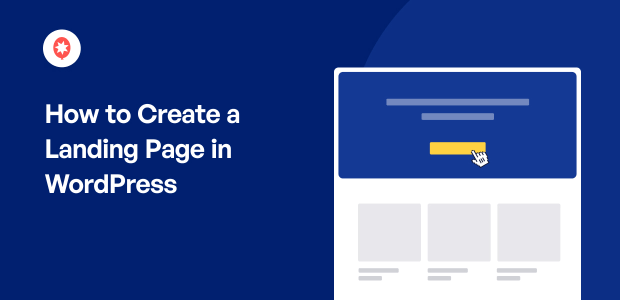
Use contrasting colors
Using contrasting colors for your call-to-action button helps it stand out and grab attention. Choose colors that are visually distinct from the rest of the page, ensuring that your CTA is easily noticeable.
Consider the color psychology and how different colors evoke different emotions and reactions. For example, red can create a sense of urgency or excitement, while green can convey harmony or positivity. Choose a color that aligns with your brand identity and evokes the desired emotional response.
Ensure that the color you choose for your CTA button is complementary to the overall color scheme of your landing page. It should create a visual contrast without clashing or appearing out of place.
Place the CTA above the fold
Positioning your call-to-action above the fold means that it is visible without needing to scroll down the page. This ensures that visitors do not miss the CTA and increases the likelihood of them taking action.
Placing the CTA above the fold allows you to capture the attention of visitors immediately and direct them towards the desired action. It eliminates the need for visitors to scroll before they can engage with your offer, reducing the risk of them losing interest or being distracted by other elements on the page.
Consider the overall structure and design of your landing page to determine the best position for your CTA above the fold. It should be placed in a prominent and easily accessible location, such as the top right or center of the page.
Use forms strategically
Keep forms simple and easy to fill
Forms are a common element on landing pages and are often used to collect information from visitors. To make it more likely that visitors will complete your form, it’s important to keep it simple and easy to fill out.
Only ask for essential information that is necessary for your business objectives. The more fields you include in your form, the more time and effort visitors will need to invest. Keep the number of fields to a minimum to reduce friction and increase the completion rate.
Group related fields together and use clear labels to indicate the type of information required. Consider using placeholder text within the form fields to guide visitors on what information to provide.
Ensure that your form is easy to navigate and can be completed using a keyboard or touch screen. Visitors should be able to move between fields easily and correct any errors without losing their progress.
Request only essential information
When creating a form, it’s important to consider what information you actually need from visitors. Request only the essential information that is necessary for your business objectives and the specific action the visitor is taking.
The more information you ask for, the higher the chance that visitors will abandon the form without completing it. Keep in mind that visitors are often hesitant to provide personal or sensitive information, so only ask for what is absolutely necessary.
Consider the purpose of your landing page and the specific action visitors are taking. Ask for information that directly relates to that action and provides value to both the visitor and your business. Provide clear explanations of why each field is needed and how the information will be used.
Use auto-fill options
Auto-fill options can greatly improve the user experience and streamline the form-filling process for visitors. Auto-fill uses data that the visitor has previously entered or stored in their browser’s memory to prepopulate form fields.
By utilizing auto-fill options, you can save visitors time and effort while increasing the completion rate of your form. Visitors will appreciate not having to manually enter the same information repeatedly, enhancing their overall experience on your landing page.
Additionally, auto-fill options can reduce errors caused by typos or misremembering information. By using prepopulated data, visitors can trust that their information is accurate and minimize the need for manual data entry.
Ensure that your form is compatible with popular auto-fill plugins or features. Test your form to ensure that it works seamlessly with different browsers and devices, providing a convenient user experience for all visitors.
Incorporate progress indicators
Long forms can be overwhelming for visitors and increase the likelihood of form abandonment. Incorporating progress indicators can help to break down the form into smaller, manageable sections, making it feel less daunting.
Progress indicators provide a visual representation of how far the visitor has progressed in completing the form. They inform visitors about the number of steps remaining and the progress they have already made.
Use clear labels for each section of the form and indicate which section the visitor is currently on. This helps visitors stay oriented and understand how much effort is required to complete the form.
Consider using a progress bar or a numbered list to display the progress. Ensure that the progress indicator is visually distinct and located prominently on the form, so visitors can easily see their progress at a glance.
Implement effective SEO strategies
Choose relevant keywords
Search engine optimization (SEO) is crucial for improving the visibility and organic traffic to your landing page. One of the fundamental aspects of SEO is choosing relevant keywords that reflect the content and purpose of your landing page.
Start by conducting keyword research to identify the words and phrases that are commonly used by your target audience to search for information related to your offer. Look for keywords with a high search volume and low competition to maximize your chances of ranking well in search results.
Incorporate these keywords naturally throughout your landing page, including in your headline, body copy, meta tags, and image alt tags. However, avoid keyword stuffing, as it can negatively impact the readability and user experience of your landing page. Focus on creating valuable and informative content that resonates with your target audience.
Optimize meta tags and descriptions
Meta tags and descriptions are HTML elements that provide information about your landing page to search engines. Optimizing these elements helps search engines understand the content and purpose of your page, improving your chances of ranking higher in search results.
Include your chosen keywords in the meta title and meta description tags, ensuring that they accurately represent the content of your landing page. Keep the meta title concise and compelling, as it is often displayed as the headline in search results. The meta description should provide a concise and attractive summary of your landing page, encouraging users to click through to your site.
Ensure that your meta tags and descriptions are unique for each landing page, avoiding duplicate content. This helps search engines understand the distinctiveness of each page and prevents confusion or penalization.
Create unique and valuable content
Creating unique and valuable content is crucial for improving your landing page’s visibility in search results and attracting organic traffic. Search engines prioritize content that is original, informative, and relevant to the search queries of users.
Ensure that your landing page offers valuable and unique content that cannot be found elsewhere. Provide in-depth information, insights, or solutions that are relevant to the needs of your target audience. Consider including multimedia elements, such as images, videos, or infographics, to enhance the value and appeal of your content.
Use clear headings and subheadings to structure your content and make it easy to scan. Incorporate your chosen keywords naturally throughout your content, balancing optimization with readability and user experience.
Regularly update and refresh your content to ensure that it remains relevant and reflects any changes or updates in your industry or offerings. Fresh and up-to-date content signals to search engines that your landing page is valuable and trustworthy.
Improve page loading speed
Page loading speed is not only important for user experience but also for SEO. Search engines prioritize fast-loading websites, as they provide a better user experience and are more likely to keep visitors engaged.
To improve the loading speed of your landing page, ensure that you have chosen a lightweight and optimized theme. Compress and optimize your images to reduce their file size without compromising quality. Minimize the use of unnecessary plugins and scripts that can slow down your website.
Test your landing page’s loading speed using various tools to identify any areas for improvement. Regularly monitor the performance of your landing page and make necessary adjustments to improve loading speed.
Consider implementing caching plugins or CDNs (Content Delivery Networks) to further optimize your landing page’s loading speed. These tools store cached versions of your page on servers located worldwide, reducing the time it takes to load the page for visitors.
Test and analyze your landing pages
Perform A/B testing
A/B testing, also known as split testing, is the process of comparing two or more variations of your landing page to determine which one performs better. It involves creating multiple versions of your landing page and measuring the performance of each variant.
Start by identifying the specific elements or variables you want to test, such as headlines, images, colors, or call-to-action copy. Create different versions of your landing page, each with a single variable changed.
Split your traffic evenly among the different versions and track their performance using analytics tools. Compare the conversion rates, bounce rates, and other metrics to determine which variation is more effective at achieving your goals.
Based on the results, make data-driven decisions to optimize your landing page. Implement the changes that yield better performance and continue testing new variations to further improve your results.
Track user behavior with analytics
Analytics tools provide invaluable insights into how visitors interact with your landing page. By tracking user behavior, you can gain a deeper understanding of what elements are effective and what areas can be optimized.
Set up analytics tools, such as Google Analytics, to track metrics such as bounce rate, time on page, click-through rates, and conversion rates. These metrics can provide insights into visitor engagement, user flow, and the effectiveness of your call-to-action.
Identify patterns and trends in the data to uncover areas for improvement. For example, if you notice a high bounce rate on a specific page, consider optimizing the content or adjusting the layout to increase engagement. If visitors are dropping off during the form completion process, evaluate if the form is too lengthy or complex.
Regularly monitor and analyze the data to make data-driven decisions and further optimize your landing page.
Evaluate conversion rates
Conversion rates are a critical metric for measuring the success of your landing page. They indicate the percentage of visitors who take the desired action, such as making a purchase, submitting a form, or subscribing to a newsletter.
Monitor and evaluate your conversion rates to determine the effectiveness of your landing page in achieving your goals. Set specific conversion goals and benchmarks to track and compare your performance over time.
Identify any barriers or obstacles that may be preventing visitors from converting. Is your call-to-action clear and compelling? Is your form too lengthy or intrusive? Addressing these pain points can help to increase your conversion rates and maximize the return on your marketing efforts.
Regularly test and experiment with different elements of your landing page to optimize your conversion rates. Small tweaks and adjustments can have a significant impact on your overall performance.
Make data-driven optimizations
By combining the insights gained from A/B testing, analytics, and conversion rate evaluation, you can make data-driven optimizations to your landing page.
Take the results of your A/B tests into consideration when making decisions about headline copy, imagery, color schemes, or other design elements. Implement the changes that yield better performance and discard or modify elements that do not resonate with your audience.
Leverage your analytics data to identify areas of improvement and make informed decisions about layout, navigation, or content. Use the data to understand user behavior, preferences, and pain points, and adjust your landing page accordingly.
Evaluate your conversion rates regularly and use the insights to refine your call-to-action, form design, or overall user flow. Incorporate the feedback and suggestions from your visitors to make iterative improvements to your landing page.
By continuously testing, analyzing, and optimizing your landing pages, you can create stunning and effective experiences that engage your target audience and drive successful conversions.